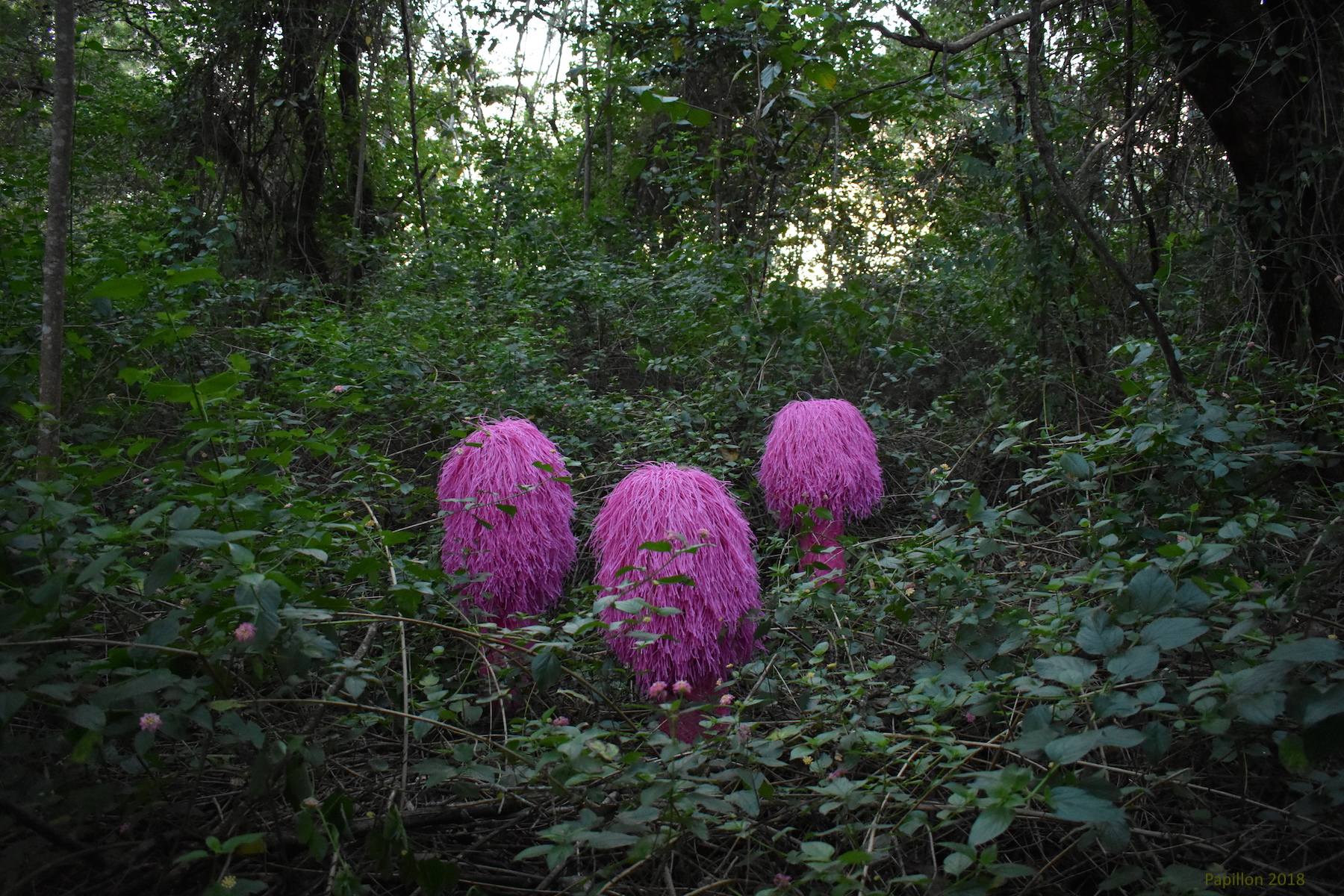1
2
3
4




Three brothers (Paddy, Richard and Jack)
Installation in regrowth rainforest, Blue Knob, NSW.
Pink bailing twine, organza, glass beads, recycled fencing wire.
The oral tradition of the Bundjalung people (traditional owners of the Wollumbin caldera in northern NSW) tells the story of ‘Three Brothers’ who came to the land and its people in the ‘Dreaming’, gave the lore, and formed the nucleus of three tribes with whom today’s traditional custodian descendants identify.
This work is not about them, but rather depicts three ‘white boys’ – Paddy Smith, Richard Kay and Jack Wright – the first team of cedar getters to arrive in the caldera in search of “red gold”; Australian Red Cedar (Toona ciliata var. australis). Paddy subsequently fathered the first white child born in country the white man had renamed the Tweed Valley. That child was the artist’s Great Great Grandfather, celebrated “true pioneer” of Murwillumbah and the Tweed.
In this work artist Papillon contemplates his own family’s settlement of the Tweed Valley in 1844, its role in the dispossession of the indigenous Bundjalung people (Goodjinburra , Tul-gi-gin, and Moorang-Moobar peoples) and the subsequent destruction of their exquisite native ecosystems.
The three figures stand in 30 year old regrowth forest – originally rainforest that was first cut for timber, then cleared for agriculture, then abandoned. While a few native tree species have re-established, the regrowth is dominated by lantana (Lantana camara), a noxious weed introduced by later settlers that became almost as widespread and as destructive and the settlers themselves.
3 brothers (detail) - Papillon 2018